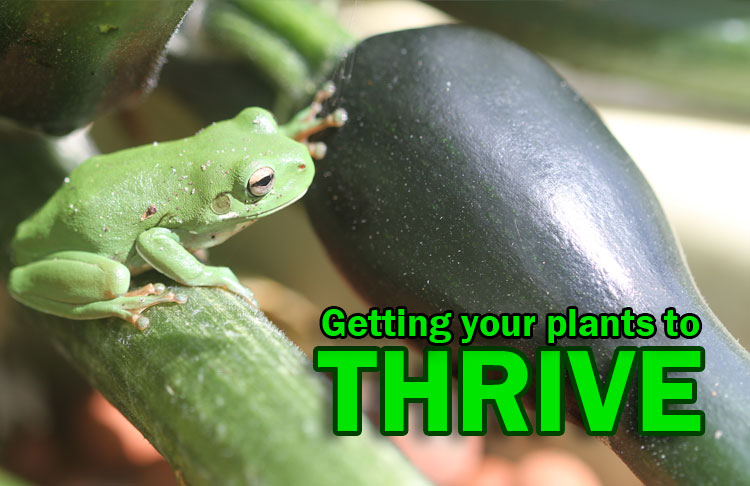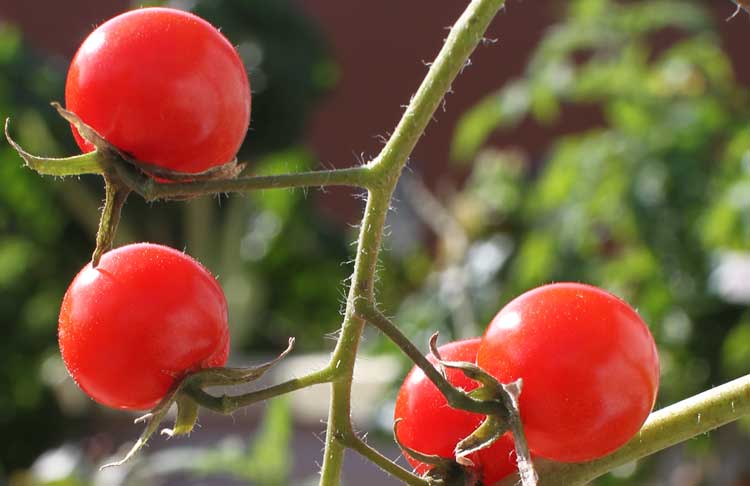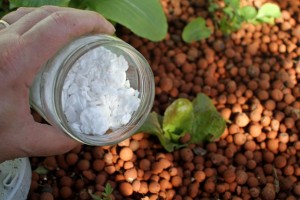Aquaponics: Getting your plants to Thrive!

Over the last three months we’ve been trialling a little additive called potassium hydroxide with the regular stuff we’ve been putting into our aquaponics system and – boy has the plant growth taken off!
For the most part, feeding your fish just pellets is fine but we always wondered if this was enough? Were the plants getting enough nutrients?
Does commercially obtainable fish food contain all the elements needed for healthy plant growth?
This is a debatable point with some people arguing that fish food is enough to power a system and if you start adding other things – then its not really an aquaponics system but starts to resemble something closer to hydroponics. Anyway, our concern was always to get great looking vegetables loaded with bursting health and vitality – grown in our own backyard. Its also fun to experiment with your system and test the end results.
We tried adding naturally produced worm juice into our system with good results – as well as the odd slurp of Seasol which contains kelp and seaweed extracts and trace minerals. Most people get very good results with just fish pellets and Seasol. Thats fine.
But occasionally people on Aquaponics forums complain that they have lots of lush plant growth but the flowers tend fall off and don’t set fruit. Their tomatoes are not setting. That type of thing. Sometimes the plants tend to shrivel and look stunted. Potassium deficiency is usually pointed out as the problem but this theory is sometimes derided as a myth by experienced horticulturists.
So what does potassium really do to a plant? Potassium has an important role regulating water and nutrient movement in plant cells. Potassium is ‘swapped’ for other nutrients when cells exchange ions. It is also required to activate more than 50 plant enzymes which allow critical chemical reactions to happen in the plant.
If you take a look at an earlier post you’ll notice a chart with the thirteen elements needed for successful plant growth and potassium is one of the main three you need to have. It doesn’t seem to be found in fish food pellets. So potassium is a vital ingredient necessary for plant health that you may need to supplement.
What is Potassium Hydroxide?
Potassium Hydroxide or caustic potash is a heavily corrosive caustic compound that should only be applied in small doses to an aquaponics system. You can get it from craft soap making firms. We add about a tablespoon every few weeks to a 1,000 litre system. Its highly corrosive and will damage the skin on your hands if handled without gloves so its best not to touch it. We apply it directly to the growbed under the water inlet from the fish tank. The white flakes will dissolve over time. Don’t go overboard and add too much as it can severely swing you pH about and kill your fish. Like all things in Aquaponics – easy does it!
The pH in a mature aquaponics system will slowly drift down over the weeks and months and become more acid, so people have been adding a little Calcium or lime to bring the pH of their systems back to the mid pH 6’s that seems to be the sweet spot for fish and plants to grow. Every now and then adding Potassium Hydroxide instead of Calcium will do the same thing – buffer the system, bring the pH down a little and also add a vital plant nutrient into the system and keep everything thriving for months.
Since using Potassium Hydroxide we’ve noticed the plant growth to take off more vigorously. Its hard to to say if this can be directly attributed to this nutrient. The cherry tomatoes in our system have gone berserk and the vine has grown beyond the confines of the system, crept around the corner of the house at least 12 to 15 feet with red bracelets of delicious red cherry tomatoes hanging over a lemon tree grown in a pot and then kept growing – creeping over an outdoor table and beyond! Cherry Tomatoes incidentally are fantastic to grow in an aquaponics system. You’ll get a continuous supply for months that taste the way tomatoes were meant to taste with that rich tangy flavour that bursts in your mouth. Yum!









Hi – I wasn’t sure about this because I knew it was used in so many other things – read up on it and there it was so thanks!
http://www.livestrong.com/article/122647-uses-potassium-hydroxide/
In the 7th paragraph of your beautiful (above) story your have stated:
QUOTE:
Every now and then adding Potassium Hydroxide instead of Calcium will do the same thing – buffer the system, bring the pH down a little and also add a vital plant nutrient into the system and keep everything thriving for months.
UNQUOTE:
Don’t you think that it should say “bring the pH UP a little and also add a vital plant nutrient into the system and keep ………….